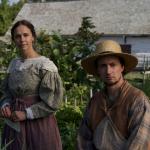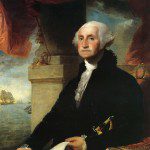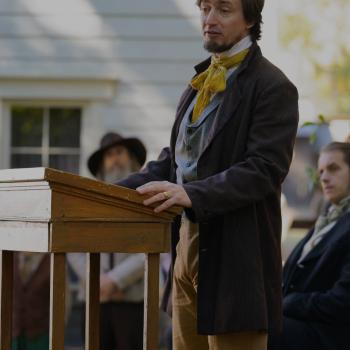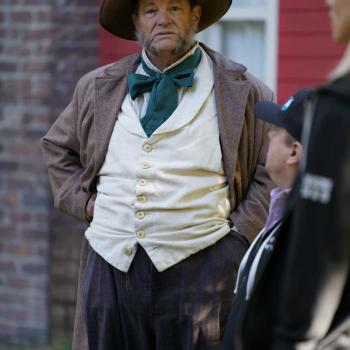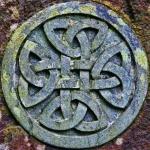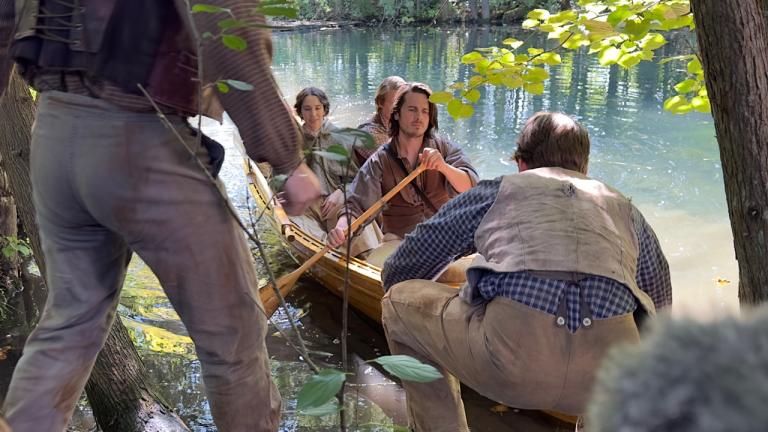
Last night, my wife and I were privileged to attend and to participate in a reception and dinner celebrating “Moroni Day” that was sponsored by Scripture Central and held at the Hyatt Regency Hotel in Salt Lake City. Roughly 550 people enjoyed a program that included the unveiling of two new statues of Moroni (late in his life and as a resurrected being) by the sculptor and plastic surgeon Steven Neil; musical performances by Dallyn Vail Bayles, Ross Boothe, and Jenny Oaks Baker; a program hosted by Jasmin Rappleye and Stephen Jones; and concluding remarks by Elder Ronald A. Rasband of the Quorum of the Twelve Apostles of the Church of Jesus Christ of Latter-day Saints.
I had interesting conversations with a large number of people, including Don Bradley, Rick Turley, Elder Matthew Holland, Jack Welch, Noel Reynolds, Jeffrey Walker, Lanny Britsch, and the like. I’m very pleased at some of the things that I heard. I’m thrilled at what I learned about the Church-commissioned biography of Joseph Smith that was recently announced by President Dallin H. Oaks — see “First Presidency Commissions New Biography of the Prophet Joseph Smith: The book will be called “Joseph the Prophet”” — and was pleasantly surprised, as he himself was, by something that Jack Welch had just been given earlier in the day (which I will leave to him to talk about, when he’s ready). The Joseph Smith biography project will be a very big one, multi-year, and will take into full account the results of the monumental Joseph Smith Papers project that, after years of work, is now drawing to a close.

Very unfortunately, our attendance at the Moroni Day celebration (“Commemorating 200 years from Moroni’s first appearances to Joseph Smith on September 21, 1823”) prevented our watching Richard L. Bushman’s concurrent keynote address for the FAIR LDS “Defending the Book of Mormon Conference.” The conflict between the two is to be lamented, and I hope that similar clashes can be avoided in the future.
And I haven’t been able to listen to all of the “Defending Book of Mormon Conference” today, either. Which I regret. A stake assignment was one of the things that interfered — I’m one of the narrators for a patriotic musical fireside that will take place tomorrow night at 7 PM, and we had a (casual) dress rehearsal for it today — and so I’m relying on FAIR to get the videos of the talks and the full papers out as soon as possible. There were some very good and clear discussions among the fragments that I was able to hear.
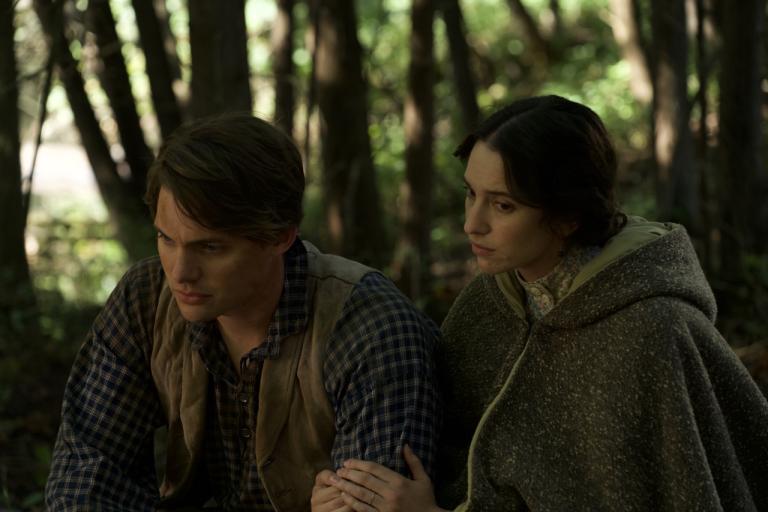
Once again, I’m grateful to Russell Richins and James Jordan for sharing still photographs with me from the filming that has been done thus far on the Interpreter Foundation’s forthcoming Six Days in August project. I wish that we would be there on set, but we can’t.
Filming at Upper Canada Village in Ontario has now been completed, and the crew and the actors are now moving down to the Rochester, New York, area, where filming will resume early this next week.
This, too, is a big project. And I still need to raise more money for it to cover what, in the trade, is called “postproduction.” It’s fun to be able to toss such terms around as if I know what I’m talking about. But I’m still scratching my head at the inattention that allowed all the contract materials to be drawn up without making even the slightest provision for furnishing me with lots of gold bling and a Lamborghini. How in the world am I supposed to look like an authenticl movie mogul without tasteless displays of lavish wealth?
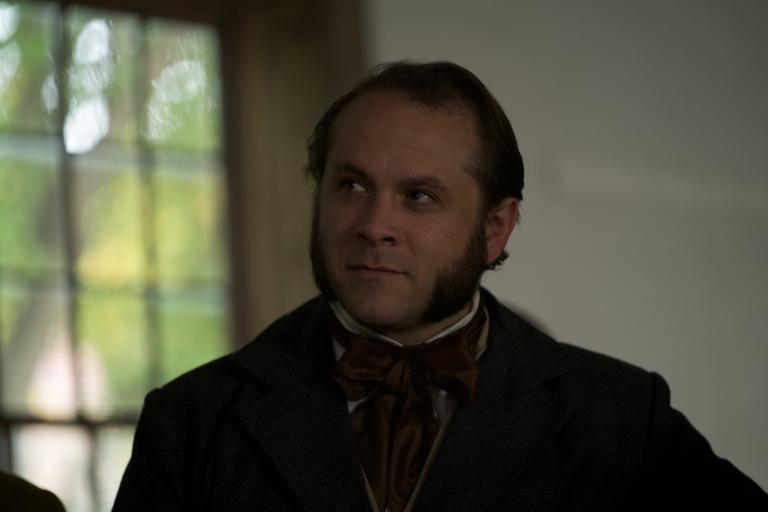
There is a logic to the sequencing of our films. The Witnesses project was designed to tell a story that, if it’s accepted as true, demonstrates that God was really, genuinely, involved in the early events of the Restoration and that, accordingly, Joseph Smith really was a prophet who had been called of God. That’s vitally important and absolutely fundamental.
Years ago, my colleague and friend Louis Midgley drew my attention to an anecdote related by the eminent Protestant church historian Martin Marty.
It conveys an important lesson.
Marie de Vichy-Chamrond (d. 1780), the Marquise du Deffand, was a famous 18th-century French hostess, as well as a friend of Voltaire, Montesquieu and other leading intellectuals of the day. She was also a notable cynic and skeptic.
Once, when she was discussing religious matters with the powerful Roman Catholic Cardinal de Polignac (d. 1742), he cited a purported ancient miracle. The martyr St. Denis, he told her, the first Christian bishop of Paris, had walked a hundred miles after his execution, carrying his head in his hand.
Madame du Deffand immediately replied that, “In such a promenade, it is the first step that is difficult.”
Whatever one thinks of the tale of St. Denis and his supposed walk — for the record, I don’t buy it — her response is very cogent.
She meant, of course, that it’s not the claim that St. Denis walked a hundred miles that poses a difficulty. (Most sources describe a walk of only about six miles, incidentally, with the saint preaching all the way.)
The distance is immaterial, a historical quibble.
The fundamental question is whether, after his beheading, St. Denis walked at all. If he did, the rest is mere detail.
Martin Marty used the story to identify what is fundamental in the claims of The Church of Jesus Christ of Latter-day Saints, particularly as those claims have come under the lens of what he terms “the crisis of historical consciousness.”
This crisis, he said, has been caused by the skepticism and intense scrutiny of modern historical scholarship, which has been directed against virtually all traditional beliefs, religious and otherwise, around the world.
“By analogy,” he wrote, “if the beginning of the promenade of Mormon history, the First Vision and the Book of Mormon, can survive the crisis, then the rest of the promenade follows and nothing that happens in it can really detract from the miracle of the whole. If the first steps do not survive, there can be only antiquarian, not fateful or faith-full interest in the rest of the story.”
Whatever complaints there may be about women’s roles in the church, same-sex marriage, the Mountain Meadows Massacre, attitudes on racial matters, church finances, the Indian placement program, imperfect leaders, or any number of other topics that tend to distract us — matters on which (please don’t mistake me) I’m confident that the church and its leaders can be adequately defended — the fundamental claims are really quite few.
But if they are granted, other issues are largely mere detail.
If — to borrow Martin Marty’s two “first steps” — Joseph Smith’s account of his First Vision is true, and if the Book of Mormon is genuine inspired scripture, many other important conclusions follow. There is, for example, a personal God. Jesus Christ is his atoning Son, who rose from the dead. The Bible is God’s word. Life continues beyond the grave. We are morally accountable. Joseph Smith is a prophet, a credible and reliable witness to divine things. God’s true church, accompanied by divine priesthood authority, has been restored to the earth. And so forth.
But, even then — for some, at least — there remains another decision-point that can pose a problem: Suppose that we’ve concluded, yes, that there is a personal God, that Jesus Christ is his atoning Son who rose from the dead, that Joseph Smith is a prophet, that God’s true church, accompanied by divine priesthood authority, was restored to the earth. The question then arises, Which, of the churches today that claim to possess that priesthood authority and to represent the Restoration that began with Joseph Smith, is the real one?
That is why it’s so pivotally important to revisit the story of the rise of the Twelve to leadership after the murder of Joseph and Hyrum Smith.
We would very much welcome your help in bringing this project to full realization.


